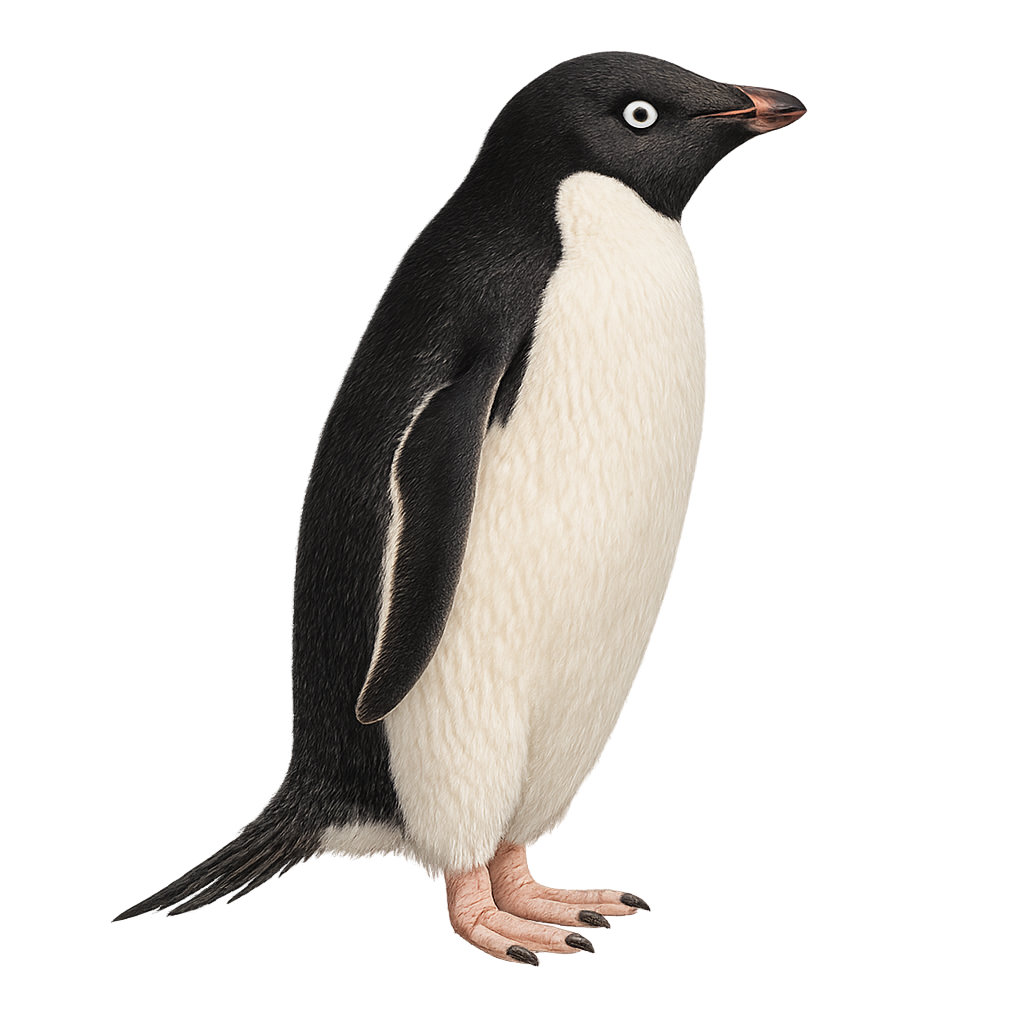Your wildlife photography guide.
Explore the adélie penguin in detail, study its behavior, prepare your shots.
Where to observe and photograph the adélie penguin in the wild
Learn where and when to spot the adélie penguin in the wild, how to identify the species based on distinctive features, and what natural environments it inhabits. The WildlifePhotographer app offers tailored photography tips that reflect the adélie penguin’s behavior, helping you capture better wildlife images. Explore the full species profile for key information including description, habitat, active periods, and approach techniques.
Adélie Penguin
Scientific name: Pygoscelis adeliae

IUCN Status: Least Concern
Family: SPHENISCIDAE
Group: Birds
Sensitivity to human approach: Tolerant
Minimum approach distance: 5 m
Courtship display: October to December
Incubation: 32-34 jours
Hatchings: November to January
Habitat:
Rocky coasts, ice floes, subantarctic islands
Activity period :
Primarily active during the day, with peak activity in the morning and late afternoon.
Identification and description:
The Adélie Penguin is an iconic bird of Antarctica, easily recognizable by its black and white plumage and elegant demeanor. Standing about 70 cm tall, it is perfectly adapted to life in the extreme conditions of its icy habitat. This penguin primarily feeds on krill, fish, and small crustaceans, which it skillfully captures in the frigid waters. Adélie Penguin colonies are often very dense, with thousands of individuals gathering during the breeding season. They build their nests with stones and typically lay two eggs. Parents take turns incubating the eggs and feeding the chicks. Although their population is currently stable, climate change and decreasing food resources pose potential threats to their future.
Recommended lens:
400mm – adjust based on distance, desired framing (portrait or habitat), and approach conditions.
Photography tips:
When photographing the Adélie Penguin, it's essential to maintain a safe distance of at least 5 m to avoid disturbing these social birds. Use a telephoto lens of 400 mm or more to capture detailed images of their fascinating behavior without getting too close. The best photos are often taken when the penguins are interacting with each other or moving in groups. Take advantage of the natural daylight to get well-lit shots, and be patient to capture unique moments.
The WildlifePhotographer App is coming soon!
Be the first to explore the best nature spots, track rutting seasons, log your observations, and observe more wildlife.
Already 1 430 wildlife lovers subscribed worldwide

